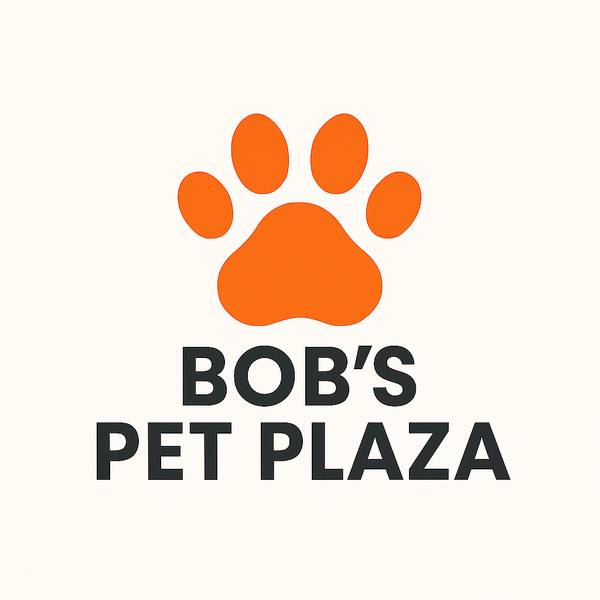Is Homemade Dog Food Healthy? What Every Pet Parent Needs To Know
In a world where health and wellness are front and center, it's no surprise that pet parents are rethinking what goes into their dog's food bowl. The question many are asking: Is homemade dog food healthy for dogs? The short answer is yes, but only if done right. Homemade diets can offer superior nutrition and customization, but they also come with risks if not properly balanced. This guide walks you through everything you need to know about the health implications, benefits, and safety tips around feeding your dog homemade meals.
Why Are More Dog Owners Switching to Homemade Food?
Growing Concerns About Commercial Dog Food
Over the past decade, a series of pet food recalls and increased awareness about preservatives, fillers, and byproducts in commercial food have driven many owners toward homemade alternatives. Many fear unknown ingredients or synthetic additives.
Personal Control Over Ingredients
Homemade dog food allows you to control the quality, source, and freshness of every ingredient. This is particularly appealing for pets with allergies or digestive issues, where a custom diet can make a huge difference.
Benefits of Homemade Dog Food
Improved Digestibility
Freshly cooked ingredients tend to be easier on your dog’s stomach, leading to better digestion, less bloating, and healthier stools.
Tailored Nutrition for Unique Needs
Customizing a diet for weight management, age, breed-specific needs, or chronic conditions is much easier with homemade meals.
Strengthened Pet-Owner Bond
Preparing food for your dog can be a deeply nurturing experience. Dogs often become more excited about mealtime, too.
Is Homemade Dog Food Healthy for Dogs? The Science Behind It
Nutrient Balance Is the Critical Factor
The biggest concern veterinarians have about homemade diets is nutritional completeness. Dogs require a specific balance of protein, fats, carbohydrates, vitamins, and minerals. An imbalanced diet can lead to deficiencies or toxicities over time.
Common Deficiencies in DIY Dog Food
-
Calcium: A lack of calcium can lead to bone deformities.
-
Taurine: Essential for heart function, especially in breeds like Golden Retrievers.
-
Vitamin D: Too little or too much can both be dangerous.
-
Omega-3 Fatty Acids: Crucial for brain and joint health.
Importance of Canine Nutrition Guidelines
Organizations like the Association of American Feed Control Officials (AAFCO) and the National Research Council (NRC) provide baseline nutrient requirements that can guide safe meal creation.
Risks and Safety Concerns of Homemade Dog Food
Risk of Malnutrition
According to veterinary studies, over 90% of homemade dog food recipes found online or in books are nutritionally inadequate. Without a vet or pet nutritionist’s input, it’s easy to make well-intentioned mistakes.
Unsafe Ingredients
Some common foods that are healthy for humans are toxic to dogs:
-
Onions and garlic
-
Grapes and raisins
-
Macadamia nuts
-
Chocolate
-
Xylitol (in sugar-free products)
Foodborne Illnesses
Undercooked meat or eggs can expose dogs to Salmonella or E. coli. Clean handling, proper storage, and safe cooking practices are non-negotiable.
How to Make Homemade Dog Food the Right Way
Work With a Veterinary Nutritionist
Consulting a professional is the most important step. A veterinary nutritionist can create a personalized meal plan tailored to your dog’s needs, weight, and health conditions.
Follow a Balanced Recipe
Use vet-approved recipes or those backed by scientific formulation. Many pet food companies also offer DIY meal kits with pre-measured nutrients.
Supplement Where Necessary
Some nutrients cannot be reliably sourced through whole foods alone. For example, calcium carbonate or bone meal may be needed to reach appropriate calcium levels.
Essential Tools for Homemade Pet Food
-
Kitchen scale for accurate portions
-
High-quality storage containers for freezing/prepping
-
Supplements (vet-recommended only)
-
Slow cooker or instant pot for batch cooking
Sample Homemade Dog Food Recipe (Balanced)
Chicken & Veggie Bowl (Vet-Approved)
Ingredients:
-
1 cup cooked, skinless chicken breast (protein)
-
½ cup cooked brown rice (carbohydrate)
-
½ cup steamed carrots (fiber and vitamins)
-
1 tbsp fish oil (omega-3s)
-
1 tsp calcium supplement
-
Vitamin/mineral mix (as prescribed)
Instructions:
-
Cook all ingredients thoroughly.
-
Cool before mixing.
-
Store in portioned containers in the fridge (3 days max) or freezer.
When Homemade Isn’t the Best Option
Situations Where Commercial May Be Safer
-
Medical conditions requiring therapeutic diets
-
Busy lifestyles with limited time for prep
-
Lack of access to a vet nutritionist
Quality Commercial Options
If you cannot commit to homemade fully, consider a hybrid model: high-quality kibble supplemented with home-cooked toppers.
Final Thoughts: Is Homemade Dog Food Healthy for Dogs?
Homemade dog food can be healthy for dogs when done with care, knowledge, and professional guidance. It offers benefits like improved digestion, ingredient control, and personalized nutrition. However, the risks of doing it incorrectly are serious and potentially harmful.
If you’re considering a switch, start by educating yourself further and collaborating with experts. Homemade dog food isn’t just about love — it’s about safe, informed love.
To discover the best pet products, we invite you to visit our affiliate links below.
Telescopic Dog Ramps for Large Dogs
